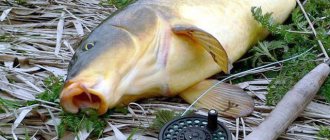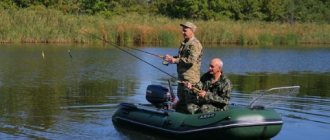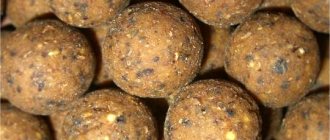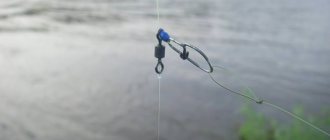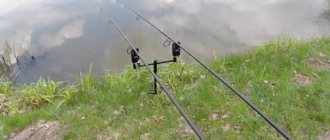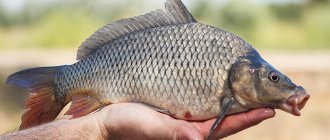Carp fishing has established itself as a separate, highly technical, narrow-profile area of fishing with firmly established traditions and rules that have become simply a way of life for some fishermen. The philosophy of fishing for large carp implies not only modern equipment for the fishing process and the development of certain strategies for its implementation, but also an integral part of the movement is the preservation, reproduction and creation of favorable conditions for the habitat of fish. The catch-and-let-go principle alone speaks of the caring attitude of movement participants towards nature and its environmental component.
The secrets of carp fishing themselves can only be understood through constant practical searches for optimal solutions for selecting baits and using baits. After all, the main task for achieving a carp bite is its proper attachment to the fishing spot. The fish is distinguished by its high degree of capriciousness and inconstancy of behavior, which is difficult to predict, even when making a detailed analysis of the factors that can significantly influence its activity.
We will try to reveal some significant secrets of catching large carp, hoping that their use in the real activities of a fisherman on a reservoir will allow him to acquire not only statistical data for his fishing history, in which he will enter an impressive mass of trophies, but also provide comfort and aesthetics of fishing, and will also help you feel the entire indescribable palette of emotions from the moment of waiting for a bite to the incredible struggle with the caught giant.
Fish habits
Catching a carp without knowing its habits will be more an accident than some kind of pattern. After all, this fish is famous in the fishing community for its cunning and unpredictability in behavior. Despite this extraordinary behavior, there is a place for consistency in the lives of these giants, based on the principles of which, the success of a fishing session can be predicted.
This fish is a heat-loving creature that becomes active in water heated above 12 degrees. Living in small flocks of individuals comparable in size is also a dogma of the existence of the species. The constancy of habitable places with their division into recreation and food areas is an important factor necessary for a fisherman when searching for a trophy in a reservoir.
The fish does not change its routes of movement from one zone to another throughout its life, and the trajectories of its movement are promising fishing points. Carps eat a lot, but only the food that they like at the moment and a well-defined taste is one of the tricks when catching carp.
Important! It is important for the fisherman to know that night fishing for carp is quite comparable to the success of hunting during daylight hours, since the fish are active in feeding, regardless of the time factor.
Feeding activity stops during the spawning period and sharply decreases when the water temperature drops below ten degrees, which makes winter fishing an almost hopeless activity.
Where do carp live?
For the most part, this is a domesticated species of fish that is kept by humans in artificial stagnant ponds specially designed for commercial and industrial fishing. But once in the wild, the fish easily colonizes reservoirs with weak currents, settling in quiet backwaters or on reaches both on large rivers and on various types of lakes.
Important! The fish ignores large depths; it loves shallow waters and areas of water with depths of up to three meters. Prefers silty soils for feeding and clayey hard bottoms for resting places.
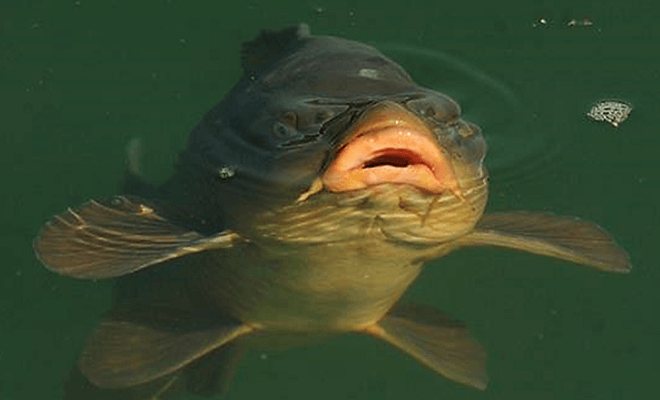
The fish uses any anomalous zones of the bottom as shelter, from underwater depressions and snags to islands of vegetation or driftwood and dead wood. Giants like to stay in coastal thickets of sedge and reeds, and their borders with clean water are always promising places for hunting carp. It is also worth focusing on the fact that carp fishing on the lake in the reeds is successful in small windows completely fenced off with vegetation with a natural clean bottom. In its absence, clearing the area by the fisherman using a rake and scythe will also become an attractive place for fish to feed. Carp are often caught on the river at the contact of the powerful flow of the main channel with the standing waters of the backwater, where the still water is enriched with oxygen, and the fish collect bottom plankton and carrion for food. In winter, the individual slides into holes up to five meters, huddling in dense flocks, settling at the bottom in anticipation of the arrival of spring and warm water.
An original way to catch big carp on the lake
There is the most difficult and at the same time the least effective way to catch carp on a lake. However, it is also in demand. This option is resorted to by fishermen who cannot sit still for even a few tens of minutes. The complexity of the method lies in the fact that you need to catch carp without the help of any bait, as well as without the use of rods and bait. A fisherman, wearing polarized glasses and seeing the silhouette of a fish in the water column or at the bottom, enters the pond with a landing net. It is necessary to approach the object carefully and slowly, so as not to scare away potential prey. For equipment, the fisherman must wear special boots-trousers. Basically, this method of fishing ends in failure, since the carp does not allow anyone to approach it and, sensing something is wrong, will swim away with lightning speed. Also, if you decide to get into the water, make sure that other fishermen nearby will not mind you doing so.
When does the carp bite?
With the spring warming of the water by ten to twelve degrees, carp begin to peck from shallow areas of the reservoir, where plankton and small bottom animals rapidly become active. As the water warms up, the bite increases, reaching its apogee in the form of a pre-spawning feast by the end of May. With the beginning of spawning, which lasts two to three weeks, the fish stops feeding, and there is a break in fishing. The end of the mating season marks the time when the long carp fishing season begins, lasting from mid-June until the end of October.
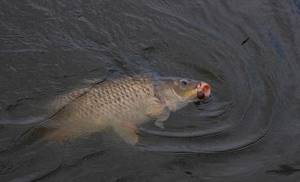
The weather for carp fishing should be stable for three or more days. Even atmospheric pressure without temperature changes, which stably keeps the water in the range of 18–20 degrees, favors the period when carp bite well. On such fine days the bite does not stop throughout the day. The approach of a thunderstorm causes a short burst of fish activity, when fishing for large carp becomes especially intense. Drizzling warm rain in cloudy weather has a positive effect on the bite. Fogs and cold mornings, as well as intense heat, on the contrary, worsen these conditions.
The weather for carp fishing in the autumn months is crucial. Sunny days promise a stable bite, cloudy weather with winds makes the fish less active. Knowing the wintering stops of schools of carp, you can successfully, especially during the thaw period, try to catch fish using a winter spinning rod. But for the most part, ice cover is not the season for carp fishing.
Carp biting calendar by month
| January | February | March | April | May | June |
| — | — | — | + | ++ | ++ |
| July | August | September | October | November | December |
| +++ | +++ | +++ | + | — | — |
When to catch carp
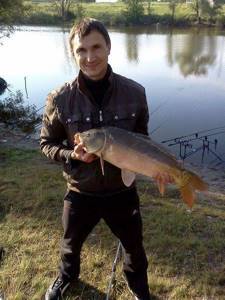
Carp fishing begins as soon as the ice has left the reservoir. At this time, the carp bite is still weak, since the water is not yet warmed up enough. It tends to shallow water, where the water is warmer, and that’s where you should try to catch it. At this time it is best to use bait of animal origin, since after winter the carp wants more protein.
Before spawning, spring feeding of carp is observed. The carp begins to actively feed in order to gain strength for grating. This is the most favorable period for catching a trophy. During spawning, and for some time after it, the carp stops biting. After which the bite resumes and remains stable all summer, since carp is a very heat-loving fish. The carp bite lasts until October, and then, with cold weather, its bite subsides. In winter, carp can also be caught, but it is not so easy and you need to try very hard.
To summarize, we can say that carp is caught all year round, but in winter its fishing is practically not practiced and only a few anglers engage in winter carp fishing, which, by the way, is quite successful.
Spring carp fishing does not begin immediately after the calendar winter has ended. At first, the carp behaves rather inactively, its bites are very sluggish and sporadic. Real carp fishing begins around mid-to-late April, the water has already warmed up and the carp will soon begin to prepare for spawning.
Before spawning, the carp bite can be crazy. You should expect the pre-spawning feast from the beginning of May, although it usually occurs later, but it is better to be prepared in advance so as not to miss the moment when you can catch plenty of carp.
Remember, carp spawning begins when the water temperature reaches 15 ºС, when the water temperature approaches this mark, then the carp eats.
During this period, trophy specimens are very often found. During this period, the carp loses its vigilance and becomes less careful, which plays into the hands of the fisherman. The carp is actively feeding and should be offered large baits, which are now much more interesting to him than small ones. In spring, carp will definitely prefer generous baits. Therefore, you should put 3 or more peas or corn on the hook, use large boilies, crawlers, etc. A carp will react much worse to a hook baited with one corn or pea, and may not even take it at all.
Well, in general, carp at this time gives preference to animal baits, but other fish will often interfere. Therefore, it is better to use boilies with protein flavor.
During this period, you should look for carp in shallow waters, where the water warms up faster. In spring, carp can feed even more actively during the day than in the morning and evening dawns, because over the winter they have missed the warmth and sunlight.
Summer carp fishing. Summer is a good period for carp fishing. But you should know that carp are very capricious about any weather changes. If the atmospheric pressure rises or falls by just a few points, the carp bite may stop for several days, a change from hot to cool and vice versa, all this can affect the result of summer carp fishing. Intense heat can also negatively affect the carp's bite.
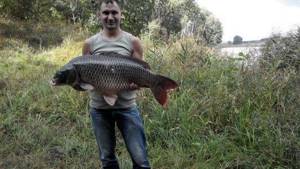
The best period for catching carp in the summer is when the weather is stable, which has lasted for at least 2-3 days and the atmospheric pressure is stable. Carp can be caught around the clock, but you should expect bites from large carp at night and in the morning. During the day and evening, small carp are more common, and other fish often get in the way. At night, the small fish rest, and the large carp goes out in search of food and continues to look for it until about 8-9 o’clock in the morning, which is what you should take advantage of. On cloudy, cool summer days, large carp can actively bite around the clock.
Autumn carp fishing . Catching carp in the fall brings a good harvest - the carp fattens. He feels the approach of winter and tries to stock up on fat, while eating abundantly. Autumn carp fishing lasts only 2 months - September and October. In November, it is already very difficult to catch carp, because a sharp drop in temperature greatly affects the activity of this fish.
In autumn, carp can also be found in shallow water areas, where they go out to bask while there is such an opportunity. After all, the water temperature is getting lower every day. Closer to winter, carp are already beginning to move deeper in search of wintering holes.
Autumn is the angler's last chance to get a good catch of carp before the winter break. In autumn, large carp can be caught even during the day, and bites at night become less and less common due to the colder weather. And by November, the carp bite subsides and it is almost impossible to catch it. Use groundbait, various lures and look for carp in their favorite places, which we will talk about below.
What do carp bite and catch?
The well-known omnivorous nature of carp gives rise to the use of different types of bait, manipulating them depending on the season of the year. Periods of intense feeding differ from more inert biting by the use of protein-rich animal food by fish in their diets, which includes mosquito larvae, worms, zooplankton, as well as the meat of the zebra mussel and toothless mollusks.
Important! Fishing for mirror carp in the spring is characterized by the use of bait of purely animal origin. During the summer season, fish tastes shift towards plant foods.
In reservoirs there are a lot of young shoots of aquatic plants and cereal seeds that fall into the water, which this voracious gourmand successfully takes advantage of. As the weather gets colder and the winter season approaches, fattening forces the fish to switch back to protein-rich food, and the bite in the fall shifts to bait with an animal component. Next, we will give advice when catching large carp, based on the use of the most common and effective baits, which in the carp angler’s arsenal should occupy a leading position when planning fishing trips, making only adjustments for the seasonality of the hunting period.
Plant attachments
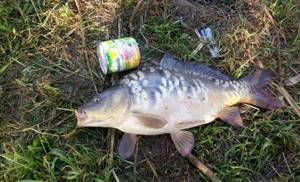
You can catch carp, without exception, using all boiled and steamed grain crops. Pearl barley always looks preferable in this regard due to the size of its grain and a more reliable method of fastening to hooks. It’s hard to imagine catching golden carp in a pond without using canned sweet corn, garlands of which are successfully used when planning fishing for large carp. Steamed peas on some ponds are loved by capricious gourmets no less than sweet corn grains. New potatoes, cooked until the small tubers remain firm and not crumbly, are an excellent variety for the summer months.
Read more about catching carp with potatoes. How to properly prepare the bait and how to fish.
I would especially like to dwell on the use of dough, which is used as a vegetable bait in freshly prepared and dry form. Hominy is filled with a liquid attractant and screwed onto hooks using a syringe. Dried dough, in the modern interpretation of boilies or pelets, is prepared using various kinds of coloring and strong-smelling ingredients, bringing the finished product to different physical states that allow boilies to sink, float and stay in the water column. Bait no less attractive in taste includes white and black bread, the crumb of which is fed into the fishing zone both as bait and as complementary food.
Animal nozzles
Catching carp with a bunch of worms is one of the classics of this type of hunting. Dung and leaf worms, their various earthen species and crawlers are always suitable as bait for an insatiable fat fish. In addition, in a reservoir unknown to the fisherman, catching carp with a worm, due to its versatility, is justified with any strategy. After all, fish are accustomed to this type of food, regardless of the terrain and time of year.
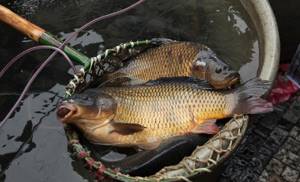
Bloodworms, maggots, caddis flies and burdock larva are applicable in early spring and autumn, close to pre-winter. Inert, stationary baits with a high bite yield include crayfish meat and shrimp, the soft body of toothless fish and pearl barley. The zebra mussel snail, freed from its shell and dried in the fresh air for better possibilities of mounting on a hook, perfectly attracts large specimens with its smell, which is successfully used by carp anglers during the season of catching trophy carp in the pre-autumn period.
Often, when the bite is unstable, anglers mix baits, when the carp bait is assembled from animal and plant components in the form of a sandwich. A popular mix is maggots and sweet corn, as well as pearl barley combined with dung worms.
Important! Adding bloodworms to cereal grains always has a positive effect on the quality of the bite and its implementation.
Animal bait
Carp, which belongs to the carp fish species, prefers primarily animal bait: worms, maggots, caviar, various insects and their larvae. Carps are also not averse to biting on such baits, but only in the spring and autumn - the carp is considered almost a predator and can bite on live bait almost all year round.
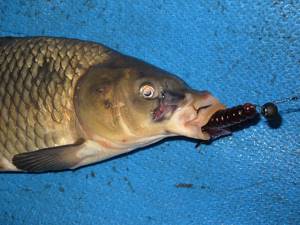
Unlike carp, carp can also take bait from a predator; for example, it can bite on jig baits, in particular rubber. There were cases when this fish pecked at small baitfish - but all this was an exception. If you want to catch carp with animal baits, then you should first choose worms, larvae and insects. Let's figure out which ones exactly.
Worms: earthworms, dung worms, crawling worms
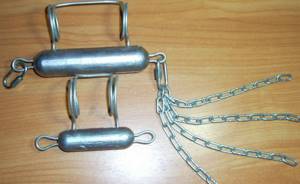
A good bait for carp is a bunch of dung worms, which is strung on a hook, and it is desirable that it be part of a hair rig that uses boilies, corn or peas. When catching carp fish, you can use a regular bunch of worms, and also use them in complementary feeding, cutting them into small pieces.

In winter, carp bite exclusively on worms; in spring and autumn, they also prefer this bait. Any type of annelid will do: earthworms, crawlers, dung worms, red and white earthworms. How exactly to place live bait of this type is an individual matter - it happens that in a pond the fish prefers to take small pieces of the worm, and sometimes vice versa, only large bunches of huge crawlers. Be sure to experiment - it will bear fruit.
Larvae: maggots, caddis flies, caterpillars and others
Among all the larvae of all carp fish species, the favorite food is maggots - it should be used when catching large carp and carp. It bites especially well on fly larvae in early summer and spring, during the pre-spawning and spawning periods. As in the case of earthworms, it is important to use large bunches of maggots, and for greater efficiency, a couple of larvae can be pierced so that they “release juice” and excite the fish.
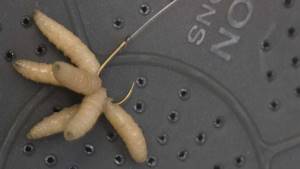
Exactly how many maggots to put on a hook? This directly depends on its size and the fish you want to tempt to bite. In addition to maggots, you can also use other larvae.
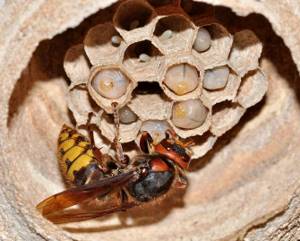
Larvae of wasps, bees, and drones are considered elite bait, which is quite difficult to obtain, but possible. Like maggots, they are best used in bunches. You can’t buy such bait in a store, and it’s quite difficult to get it yourself – but the fish go crazy for this type of larvae.
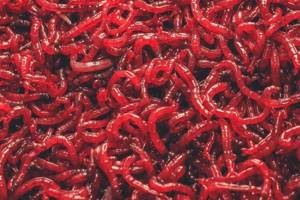
Bloodworms or mosquito larvae are bright and quite effective bait, but due to their size they are demanding in terms of the number of worms strung on the hook. You can wait for a trophy only by wearing 8-15 larvae; in other cases, either crucian carp or roach will peck.
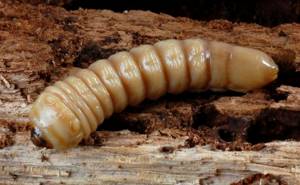
Bark beetle larva is another effective bait that can be used along with maggots. As is the case with other small worms, the more bark beetles on the hook, the higher the likelihood that a large specimen will be tempted by the bait.
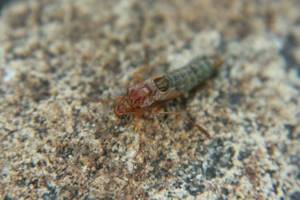
Caddis flies are quite an effective bait, which is difficult to find without skills and knowledge. Typically, fishermen independently catch caddisfly larvae in a pond. It is also best to use them in bunches.
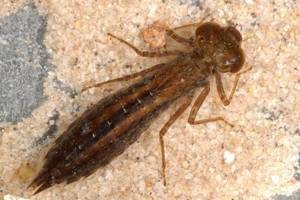
Dragonfly larvae - if desired, you can get a lot of such bait. The bait is good both for catching carp and for hunting predatory fish.
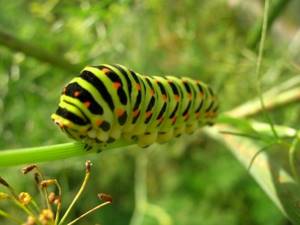
Caterpillars are also attractive to fish, but can scare away native species in your pond with their bright colors. There are also poisonous species of caterpillars, which should be taken into account when catching them.

Separately, the larva of the May beetle should be highlighted. These large caterpillars are capable of seducing not only large carp and carp, but also catfish, pike and trophy crucian carp. Getting them is problematic, but in rural areas it is possible. The main thing is to choose the right hook and assemble strong tackle so that you can pull out a large fish without any problems.
Lure
Carp fishing is based on the use of impressive volumes of bait, which has to be prepared from many components. Any carp complementary food is prepared on the basis of bulk fish feed, mixing additional nutritional elements of plant and animal origin in certain proportions, adding strong attractants to the mixture. Depending on the type of bottom base, the consistency of the bait can vary from loose, placed on muddy surfaces, and thick, sticky, which is fed in balls onto hard clay bases. Carp fishing for beginners begins with the ability to prepare complementary foods that are effective in taste and plastic properties.
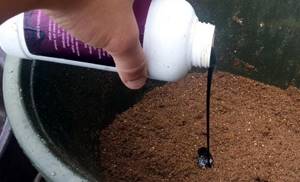
Important! For a dark-colored bottom, light mixtures are prepared, which additionally attracts fish; in other cases, vice versa.
Additional complementary foods include porridge, pearl barley, millet, and buckwheat. Porridges are not strained after cooking, using their adhesive properties as a material that performs the functions of connecting ingredients. Catching carp on a lake in the reeds involves the use of light bait that crumbles at the bottom. They contain vanilla breadcrumbs and regular semolina, which gives the compositions flowability and friability.
Catching carp on a river with a current requires the presentation of strong balls that remain at the bottom in an indestructible state. For these qualities, groundbait compositions include soil and clay. The bait is filled with live elements, bloodworms and maggots, as well as chopped worms just before being thrown into the water. Attractants are used of natural and artificial origin. All kinds of strong-smelling spices: vanilla, chicory, dill, cloves and cumin will undoubtedly attract a voracious gourmand to the fishing point. Molasses, sugar, honey, cocoa, garlic essence have a particularly strong effect on the carp's sense of smell in the summer.
Important! It is recommended to make small portions of bait with the addition of different types of attractant, and after determining the stable preference of the fish at a given time, mix the main batch of food, using water from the reservoir directly in which the fishing is carried out as a humidifier.
It is worth paying attention that carp sessions of considerable duration and souring of complementary food, followed by its supply to the baiting zone, threatens to have the opposite effect, scaring away the fish.
Carp fishing gear
In most cases, carp fishing is carried out using rods made in reinforced versions with additional fastenings of winding rings and the ability to change quiver types of tackle in a wide test range. The power of the equipment is determined by the extreme loads that arise when fishing for carp. The most common is bottom fishing, which requires additional equipment for installing gear on the shore of a reservoir and equipping rods with bite alarms.

The equipment for mounting the tackle looks like a collapsible or solid stand combined for several fishing rods with brackets for the tackle. These devices are called rod-pods. Alarms are used with electronic sound sensors, which are triggered when the cord moves from the fish sucking the bait. Options for alarms range from ordinary single tweeters to sets with swingers and a pager, which provides control of the gear from a distance. All these accessories make it possible to provide comfort, reliability and aesthetics for catching large carp in conditions of both paid sites and natural reservoirs. We will consider the main elements of equipment for carp fishing rods in the text of the article in greater detail.
Carp rods
These are mainly heavy and super-heavy feeder gear with tests over 100 grams. Depending on the fishing distances, rods are selected in different formations. For short distances, a slow action is used, which makes it more comfortable to fish for heavy and bulky fish with soft shock-absorbing tackle. For long casts, fast action gear is used, balancing on the reel and a combination of lines with shock leaders. The length of fishing rods from two and a half to three meters is sufficient for various types of reservoirs. Plug rods are used with shock absorbers in quivertips and total joint lengths from 10 to 17 meters. Bolognese tackle with test weights from 40 grams and a length of up to seven meters.
Reels
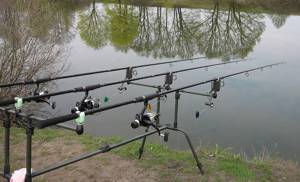
Reel mechanisms with a baitrunner and high tractive effort - these and only these accessory options are applicable in carp fishing. The baitrunner ensures the safety of the gear, and the traction force allows the fisherman to ensure the capture of the trophy without unnecessary physical exertion. The reinforced body and gears made of metal alloys ensure reliable performance of the reel. The high capacity of the spool should allow for a large supply of cord in various diameters.
fishing line
The main line material used also depends on the fishing distance. For short ones, up to 20 meters, monofilament lines are used. Increasingly longer distances are served using braided cords. The diameters of the scaffold must provide tensile strength starting from 40 kilograms. After all, even a five-kilogram carp, when fished, can increase the load on the tackle three or four times. Making the tackle more sensitive and invisible, they use cords of smaller diameters, installing a shock leader made of thicker monofilament at the end of the mounting, thereby ensuring reliability of fishing in the final stages of fishing, near the shore, where the resistance of the trophy becomes much more noticeable. Main cord lengths from 100 meters, standard equipment variations.
Tricks for carp fishing: tips for beginners
Beginners gradually learn the intricacies of fishing for this underwater inhabitant. The secrets of carp fishing can only be revealed by skilled fishermen who have studied this area for a long time:
- You need to go out for carp with a partner and it is advisable to plan your fishing for several days.
- You need to take different baits with you. All of them must be fresh and of high quality.
- Adding flavors to bait can increase its effectiveness. But try not to overdo it with the richness of taste, otherwise you will get the opposite result - a lack of bite.
- The best bait for carp is a boilie, and the rig is a hair one.
- In summer you need to use plant baits, in spring and autumn - animal baits.
- Monoline better absorbs fish jerks, but reduces the sensitivity of the gear.
Carp is a cautious and suspicious fish. You cannot make too much noise on the shore and use too rough gear.
How to catch a big carp
Depending on the type of reservoir and the size of the intended trophy, fish can be caught in various ways. The methods and techniques of carp fishing have their own slight differences from fishing for other equally popular fish. Fishermen successfully cultivate bottom - the classic type, plug and feeder fishing methods. Float rigs are also successfully used when using Bolognese, match and fly rods. Let's take a deeper look at some of the popular methods of catching trophies, focusing on the nuances of the technique and strategy of such fishing.
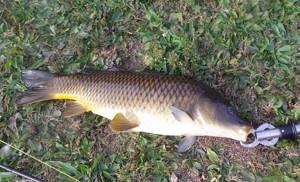
How to properly catch carp on a donk
To catch this powerful fish, it is more effective to use a rubber donkey, which scares away the fish less by casting and can cover a large promising area with the supply of bait. A dozen leashes up to half a meter long are installed on the main braided cord, equipped with hooks for the type of bait being supplied. The leads are equipped with a small float boss to hold the nozzle above the silt layer. On the coastline, the donkey is attached to a strong pole or a natural reliable fastening through a rubber shock absorber, which, in the event of a significant trophy, will protect the tackle from breaking. The cord is equipped with an audible alarm. It is recommended to periodically feed the donkey’s installation trajectory by delivering complementary food with a slingshot or catapult from a fishing rod. The peculiarities of catching carp at night, covering a large area of the pond, are provided precisely by this method.
Methods for attaching a worm to a hook when fishing for various types of fish
The choice of method for attaching a worm to a hook depends on several factors. First of all, this is the type of fish and its size. Catching crucian carp with a worm is classic in terms of using this bait. The most practical way to catch this fish is to rig a worm with a stocking. When trying a delicacy, the crucian carp does not prick the hook and, not feeling a catch in the bait, sucks it up without any suspicion.
A bunch of worms is an excellent choice when fishing for bream and catfish. The only difference is the size of the nozzle. Putting a dung worm or underleaf on bream is more effective. For catfish, of course, a crawl is exactly what you need.
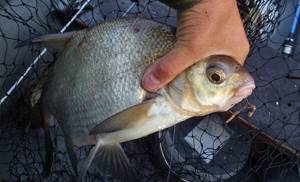
Carp and carp are caught by rigging a hook with a worm using the ring or figure eight method. This method completely cuts off the small things from the bait, since it will only be available in bulk form for large fish.
Worm pieces are used to catch small fish, roach, rudd, bleak and gudgeon. This method is great for quickly catching live bait for further catching predatory fish.
Important! A fishing trick that helps in activating the bite is a small break in the tail of the worm. In this way, the speed at which the scent of the bait spreads increases, thereby attracting more fish to the fishing spot.
Based on the above recommendations, we can conclude that the correct worm attachment is the key to a successful fishing strategy.
Reasons why carp don't bite
It is impossible to name definitively detailed reasons for the lack of bite. Some aspects of fish life have not yet been sufficiently studied by humans. But some reasons influencing its intensity can still be formulated, thereby eliminating their consequences or preventing them in order to increase your chances of a successful fishing result. The root cause of fish passivity is the weather. Sudden changes in pressure, foreshadowing a change from heat to cold and vice versa, negatively affect the behavior of fish.
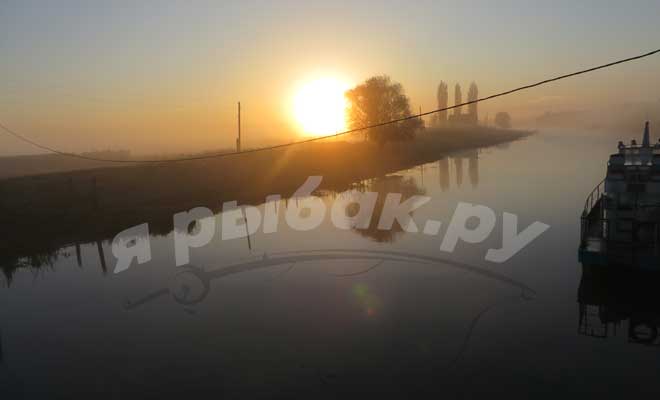
Important! When planning a fishing trip, always check the weather forecast for at least a week in advance. Choose a time for departure after the pressure has stabilized, without strong winds and intense precipitation.
A more common reason for lack of bite is the wrong choice of bait and bait. To avoid this miscalculation, you should initially make test casts, using various baits, changing the ingredients in the bait, thereby finding the optimal option that gives the largest number of fish yields. A weak bite can be activated by making the equipment more sensitive. These are measures to reduce the diameters of the fishing line with the addition of a shock absorber to the tackle, changing hooks to thinner analogues, knitting rigs for delicate fishing, for example, replacing a symmetrical loop with an asymmetrical one. Experimenting at the moment of passive biting will definitely give results. Inaction will only bring disappointment and loss of time.
